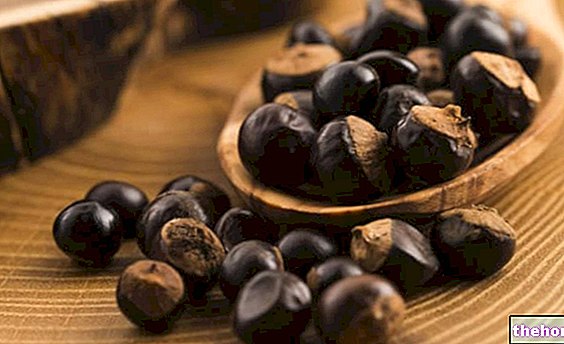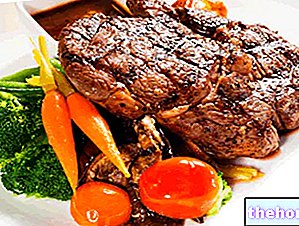
About BCAA complex 5050 - Dymatize
BCAA COMPLEX 5050 - DYMATIZE
Food supplement of branched chain amino acids in powder form
FORMAT
Pack of 300gr
INGREDIENTS: L-Leucine - L-Isoleucine - L-Valine
For 5 grams: - L-leucine 2500 mg - L-valine 1250 mg - L-isoleucine 1250 mg
Branched chain amino acids - they represent one of the most used supplements in sports practice. Their importance is due to the "high muscle tropism that characterizes them, so much so that they represent more than 1/3 of the total amino acid pull at the muscle level. Like the other essential amino acids introduced with the diet, the branched ones are absorbed in the intestine, mainly duodenal, and released into the circulation to be subsequently distributed to the various tissues, while unlike the other amino acids they can skip the first hepatic metabolism and reach the muscle tissue directly. The digestion and absorption times vary naturally depending on the complexity of the food, the "size of the meal, ranging from a few minutes for the synthetic product (supplement) up to several hours for foods of different nature. The rapid intestinal transit and the immediate bioavailability make the supplement particularly suitable for the various needs of the athlete."
The demand for these amino acids increases considerably during physical activity, especially when this is prolonged for prolonged times, given the significant increase in oxidation levels, especially on leucine, and the consequent decrease in plasma levels. average requirement of about 83mg / kg / day in healthy individuals to 250mg / kg / day in competitive athletes who practice endurance sports. The importance of a correct intake is mainly due to:
- metabolic effect: branched amino acids are essential in energetically supporting the body during the phases of intense physical activity and facilitating the synthesis of glucose starting from non-glucidic metabolites;
- protective effect: necessary to significantly reduce the proteolysis induced by intense physical exercise and probably involved in avoiding the post-workout immune decline;
- modulator effect: involved in the modulation of hormonal function and intracellular signaling;
- anti-fatigue effect: central competitors of tryptophan.
The effectiveness of BCAAs in sports practice

The anabolic action of BCAAs is of growing interest and is in the process of being characterized by inducing insulin secretion on the one hand and by enhancing the intracellular signal on the other, with consequent stimulation of protein synthesis.
Partially characterized is also the "anti-fatigue effect, which would be expressed through a competition mechanism for the transporters of the blood brain barrier against tryptophan, an important substrate for the synthesis of serotonin, in turn involved (at high doses) in the phenomena of sedation and fatigue.
To date, branched-chain amino acids are used more for the myoprotective and anti-fatigue effect than for the hormonal one, despite the first significant evidence on their anabolic effect.
Product features - BCAA complex 5050 - Dymatize
The product in question is presented as a suitably calibrated mixture of the three branched chain amino acids, in the form of powder. The powder form, easily dispersible in an aqueous environment, while not presenting particular advantages in pharmacokinetic terms, guarantees
- Easier to take;
- Dosage modulation.
In particular, this last characteristic allows the formulation of dosages that are perfectly adaptable to the needs of the athlete, relating them in detail to the "dietary" protein content.
Method of use recommended by the company - BCAA complex 5050 - Dymatize
Mix a portion of 5g (one heaped teaspoon) in 300-400ml of water, fruit juice or your favorite beverage. Take before and / or after training.
Directions for use in sports - BCAA complex 5050 - Dymatize
Although daily practice proposes defined and standardized dosages, it is not possible a priori to define a useful and valid quantity for everyone. As in most cases, and in particular for amino acid and protein supplements, it is essential to define a supplementation protocol that takes into account the nutritional-dietary status, the type of physical activity performed and the physio-pathological condition of the athlete. after having carefully evaluated all these characteristics, it will be possible to define the optimal dosage necessary to integrate the amino acid content already introduced with the diet. Even the various studies published in the literature seem to agree on this point, so much so that very different dosages are used, ranging from 83 mg / kg / day to 250mg / kg / day, passing through all the possible intermediates. to perfectly adapt the supplement to the diet, providing controlled and well-defined dosages, always maintaining the correct ratio between the three amino acids (Leu, Ile, Val 2: 1: 1).
The intake should preferably be done on an empty stomach, in order to avoid any competitive phenomenon and maximize absorption.
Pre-workout intake: it has been shown to be useful in reducing muscle damage induced by intense physical exercise and counteracting the sensation of fatigue. In this case it would be better to take BCAAs with water and not with simple sugars, in order to avoid any hypoglycemic phenomena. reactive that could negatively affect performance. It could instead be useful to use maltodextrins or carbohydrates with a medium / low glycemic index at the same time, in order to energetically support performance and delay amino acid oxidation.
Post work out intake: in this case in synergy with high glycemic index sugars and arginine, it could be useful in optimizing the anabolic window and enhancing both glycogen and protein muscle recovery.
Synergies BCAA complex 5050 - Dymatize
BCAA + Arginine: a study carried out on 8 healthy volunteers shows a significant reduction in phenylalanine levels (marker of muscle proteolysis) following physical exercise preceded by integration with 2 g of BCAA and 0.5 g of arginine.
BCAA + Carbohydrates: some studies show a useful synergy to reduce the feeling of fatigue during athletic performance (potential role of BCAAs), and improve performance (energy role of carbohydrates). In the post work out, however, BCAAs seem to improve insulin sensitivity, therefore the resynthesis of glycogen in the presence of CHO, while carbohydrates with a high glycemic index, by increasing insulin secretion, can both favor the absorption of the same BCAAs and support the anabolic phase
Side effects BCAA complex 5050 - Dymatize
Known are the long-term side effects of a diet too rich in protein or amino acids. Damage to the kidney, dehydration induced by increased urinary secretion, lipidemic alterations and associated pathologies, tissue acidosis and bone demineralization, are just some of the consequences of a prolonged unbalanced diet.
Acute BCAA ingestion appears to be well tolerated and free from side effects, even when concentrations rise to 450mg per pound of body mass.
Precautions for use BCAA complex 5050 - Dymatize
The product is contraindicated in cases of renal or hepatic pathology, cardiovascular disease and / or hypertension, in pregnancy, during lactation, under 12 years and in adolescents not yet trained.
In case of prolonged use (over 6/8 weeks) the doctor's opinion is necessary.
This article, elaborated on the critical rereading of scientific articles, university texts and common practice, is for information purposes only and therefore has no medical prescription value. It is therefore always required to consult your doctor, nutritionist or pharmacist before undertaking the use of any supplement.. Learn more about the critical analysis of BCAA complex 5050 - Dymatize.
J Strength Cond Res. 2010 Apr 7. [Epub ahead of print]
BCAA Supplementation Lowers Perceived Exertion But Does Not Affect Performance in Untrained Males.
Greer BK, White JP, Arguello EM, Haymes EM.
J Strength Cond Res. 2010 Apr; 24: 1125-30.
Sharp CP, Pearson DR.
J Sports Med Phys Fitness. 2009 Dec; 49: 424-31.
Matsumoto K, Koba T, Hamada K, Sakurai M, Higuchi T, Miyata H.
J Nutr Sci Vitaminol (Tokyo). 2009 Jun; 55: 288-91.
Shimomura Y, Kobayashi H, Mawatari K, Akita K, Inaguma A, Watanabe S, Bajotto G, Sato J.
Int J Sport Nutr Exerc Metab. 2007 Dec; 17: 595-607.
Greer BK, Woodard JL, White JP, Arguello EM, Haymes EM.
Int J Sports Med. 2007 Jun; 28: 531-8. Epub 2007 May 11.
Matsumoto K, Mizuno M, Mizuno T, Dilling-Hansen B, Lahoz A, Bertelsen V, Münster H, Jordening H, Hamada K, Doi T.
Med Sci Sports Exerc. 1998 Jan; 30: 83-91.
Mittleman KD, Ricci MR, Bailey SP.
Sports Med. 1995 Sep; 20: 160-88.
Meeusen R, De Meirleir K.
Amino Acids. 2001; 20: 1-11.
De Palo EF, Gatti R, Cappellin E, Schiraldi C, De Palo CB, Spinella P.
J Sports Med Phys Fitness. 2000 Sep; 40: 240-6.
Coombes JS, McNaughton LR.
Sports Med. 1999 Jun; 27: 347-58.
Mero A.
and to allow maintenance of a high level of performance.
J Cell Biochem. 2010 May 12. [Epub ahead of print]
Higuchi N, Kato M, Miyazaki M, Tanaka M, Kohjima M, Ito T, Nakamuta M, Enjoji M, Kotoh K, Takayanagi R.
Adipose tissue branched chain amino acid (BCAA) metabolism modulates circulating BCAA levels.
Herman MA, She P, Peroni OD, Lynch CJ, Kahn BB.
J Biol Chem. 2010 Apr 9; 285: 11348-56. Epub 2010 Jan 21.
http://jn.nutrition.org/cgi/content/full/135/6/1547S
Int J Sports Med. 2007 Jun; 28: 531-8. Epub 2007 May 11.
Matsumoto K, Mizuno M, Mizuno T, Dilling-Hansen B, Lahoz A, Bertelsen V, Münster H, Jordening H, Hamada K, Doi T.




























